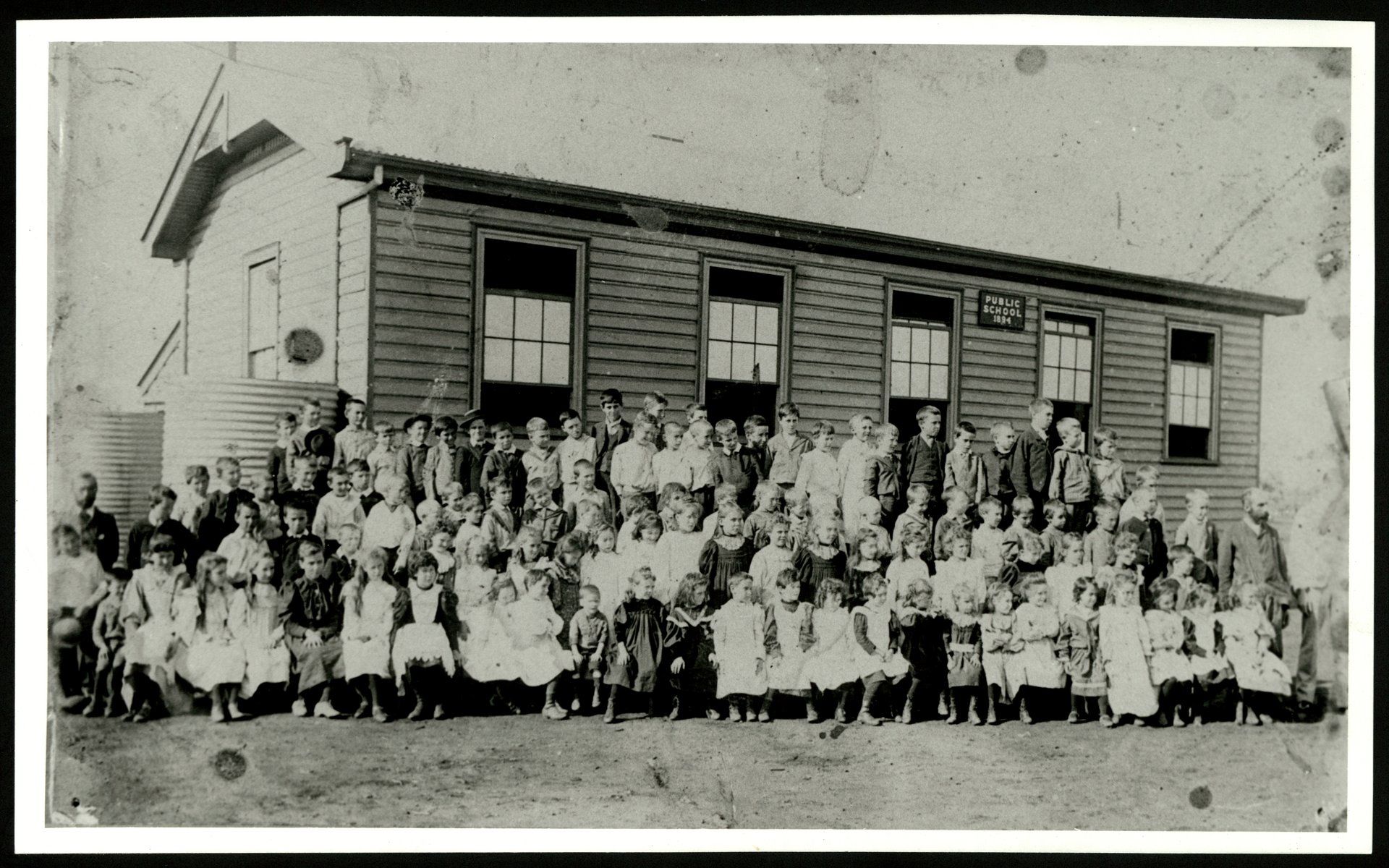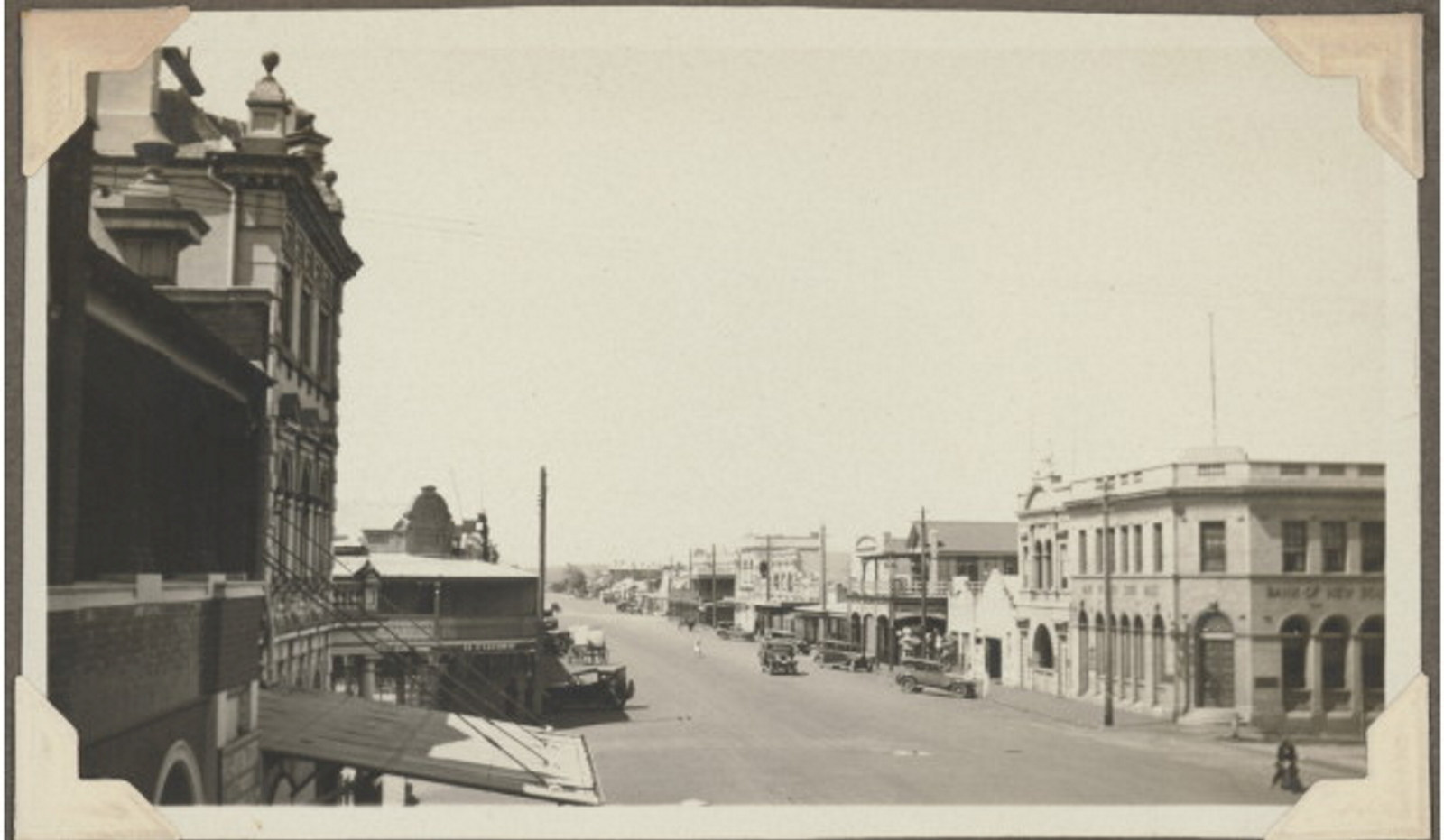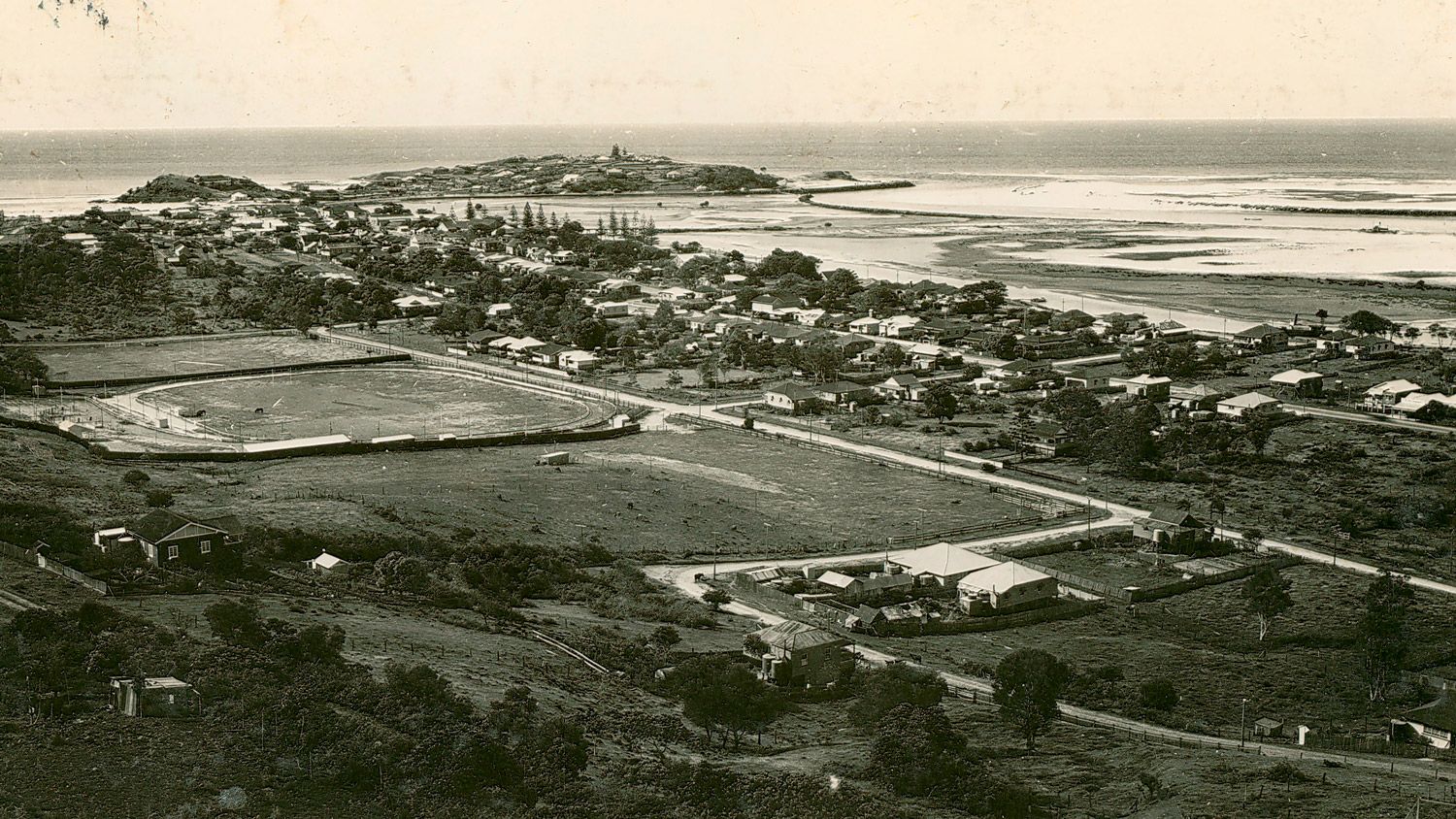Coonabarabran school records
Explore the NSW town of Coonabarabran through records in the State Archives Collection
Schools are often the centre of a town and reflect the good times and bad times but also the fun times like days off for the local show. They reflect the culture and location of the town – early finishes so the children can help with the milking or more pupils attending while the railway is built nearby. Teachers move from school to school frequently and struggle to find accommodation in growing towns. Teachers study and take exams to progress in their careers. Their leave requests provide many details about their lives.
Watch the recording of the Archives on Tour virtual event
School Files, 1876-1979
[NRS-3829]
What are they?
The school files [NRS-3829] were created by bringing together all of the correspondence about each school. The correspondence is from teachers, parents, the Education Department and District Offices, other Government Departments, Local Members and Education Ministers. Some school files are up to 15 boxes of papers; some are only a few centimetres thick.
More about this series in Collection Search
What can these records tell you about your town?
There are similarities between all of the school files through content and purpose. They reflect their times. The files cover both wars but particularly reflect the many impacts of World War 1. The files cover waves of illnesses – measles, typhoid, influenza, diphtheria. Women resign when they marry or from 1932 are terminated when they marry as the employment of married women as lecturers and teachers was restricted. School buildings require repair, extension or replacement. Schools very strongly reflect the growth or decline of towns.
Coonabarabran and Binnaway
The school files show the growth of the government school system in these two towns. The schools in both Coonabarabran and Binnaway started in the 1870s, Coonabarabran as a public school and Binnaway as a provisional school. Binnaway had sufficient pupils by 1881 to become a public school. Both schools moved over time to gain better locations and/or more space.
Coonabarabran became an Intermediate High School from 1942 until the high school started in 1962. Binnaway became a Central School in 1944. The need for secondary schooling had been raised as early as the 1920s. Coonabarabran High School opened in 1962.
New public school buildings were approved and built from the 1870s onwards. Binnaway’s first departmental residence wasn’t built until 1913. School buildings and fences and school residences needed repairs very regularly over the years.
Schools closed for the local show and the school picnic day but also for measles, diphtheria, influenza, flood, extensive repairs and when the teacher’s house was burnt. Closing was not permitted for pony races or the opening of the rifle range. Half-holidays were given by the Minister of Education when he visited, when the foundation stone of the new school was set and for Empire Day. Schools participated in Arbor Day activities. Pupils took part in the unveiling of the Soldier’s Memorial, formed a branch of the Gould League of Bird Lovers and the boys had swimming lessons. Pupils learnt and teachers taught in marquees, rented halls, weather sheds, school Assembly Halls, Showground pavilions and school rooms where the rain blew in.
Teachers applied for leave (granted without pay) to see relatives before they went to World War 1. Teachers requested repairs and extensions to the school residence including fireplaces in the bedrooms; applied for travelling expenses; struggled to find suitable accommodation; asked if they were exempt from jury duty and requested a side drum.
Parents and Citizens groups (formal and informal) made representations in support of the schools in numerous matters – additional teachers, new buildings, not moving the school to near a public house, and for improved access to secondary education.
Coonabarabran school files
Binnaway school files
Photographic collection
[NRS-15051]
What are they?
The History Unit of the Department of School Education collected these photographs (from around 1963 to around 1991) when preparing school histories, research for public relations, or giving presentations.
Many photographs are not official photographs, so they vary in subject, titling and image quality. There are no photographs for some schools.
More about this series in Collection Search
Coonabarabran
These are early photographs of Coonabarabran Public School and one of the Coonabarabran High School buildings in 1938.
Binnaway
The three photographs of Binnaway Public School show the pupils in front of the building. A teacher Catherine Dougherty is identified in one photograph with the girls. Catherine Dougherty started as an assistant teacher in 1913.
Teacher career cards, 1908-1987
[NRS-15319]
What are they?
These cards detail each teacher’s appointments during their career in NSW government schools and/or the Department of Education. They also have some personal information like date of birth and date and details of marriage.
More about this series in Collection Search
What can these records tell you about your town?
The career cards show how frequently teachers moved (generally every 3-5 years). Reimbursement of travelling expenses was very important particularly if travelling with sick children having just lost another child as John Muller did or with a large family. Stanley Small was a temporary teacher at Coonabarabran while Charles Innes was on sick leave in 1939. Stanley Small had a long career as a temporary teacher at many schools (at least 130) over 40 years moving every few months.
Follow the links below to browse cards for Coonabarbran and Binnaway.
Coonabarabran
- Emil Agst NRS-15320-1-1-[1]
- William Birkett NRS-15320-1-5-[5]
- Anne Burke NRS-15320-1-8-[8]
- William Clutterbuck NRS-15320-1-10-[10]
- Eileen Donnelly NRS-15320-1-15-[15]
- Reginald Dunlop NRS-15320-1-16-[16]
- Henry Fox NRS-15320-1-19-[19]
- William Godfrey NRS-15320-1-21-[21]
- Vera Graham NRS-15320-1-22-[22]
- Mabel Hennessy nee Hawkins NRS-15320-1-27-[27]
- Arthur Howarth NRS-15320-1-28-[28]
- Charles Innes NRS-15320-1-28-[28]
- Donald Marshall NRS-15320-1-38-[38]
- Hilda McEwen NRS-15320-1-35-[35]
- James Peek NRS-15320-1-45-[45]
- Fred Putland NRS-15320-1-47-[47]
- Lewis Rodd NRS-15320-1-49-[49]
- Clara Schneider NRS-15320-1-50-[50]
- Roy Shaw NRS-15320-1-51-[51]
- Stanley Small NRS-15320-1-52-[52]
- Gordon Turnbull NRS-15320-1-57-[57]
- Cecil Tuxford NRS-15320-1-58-[58]
Binnaway
- Arthur Broadhurst NRS-15320-1-6-[6]
- William Champion NRS-15320-1-9-[9]
- David Donaldson NRS-15320-1-15-[15]
- Cecil Hamilton NRS-15320-1-24-[24]
- Leslie Michell NRS-15320-1-39-[39]
- John MullerNRS-15320-1-41-[41]
- Percy Peard NRS-15320-1-45-[45]
- Daniel Quinlan NRS-15320-1-47-[47]
Site register cards, 1930
[NRS-3988]
What are they?
These cards were compiled in the Department of Education and its successor agencies from approximately 1930, and record details of school sites purchased and subsequently disposed of since the early nineteenth century.
More about this series in Collection Search
What can these records tell you about your town?
The various school sites across Coonabarabran are shown. Some of the sites were used and disposed of and other may not have been used.
Coonabarabran site register card [AF00188273]
Published on
Archives on Tour
Browse all
Ulladulla school records
Explore the town of Ulladulla through the school records in the State Archives Collection

West Wyalong school records
Explore the town of West Wyalong through the school records in the State Archives Collection



















